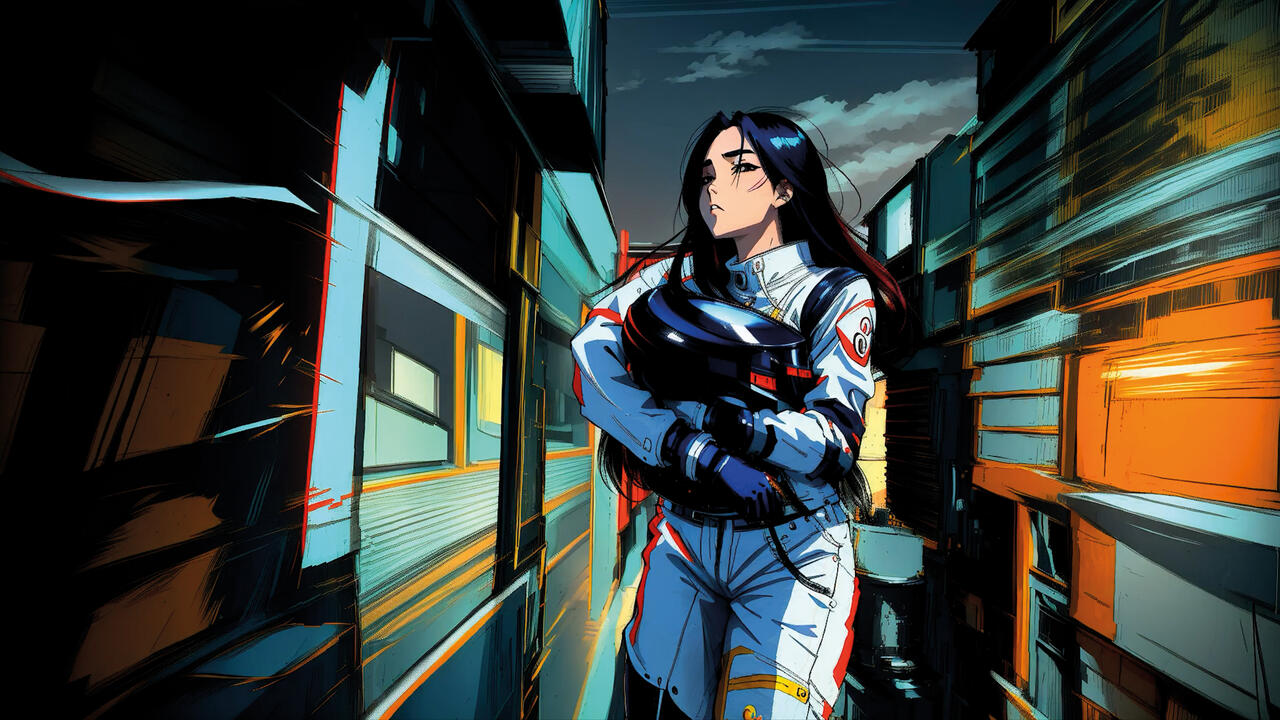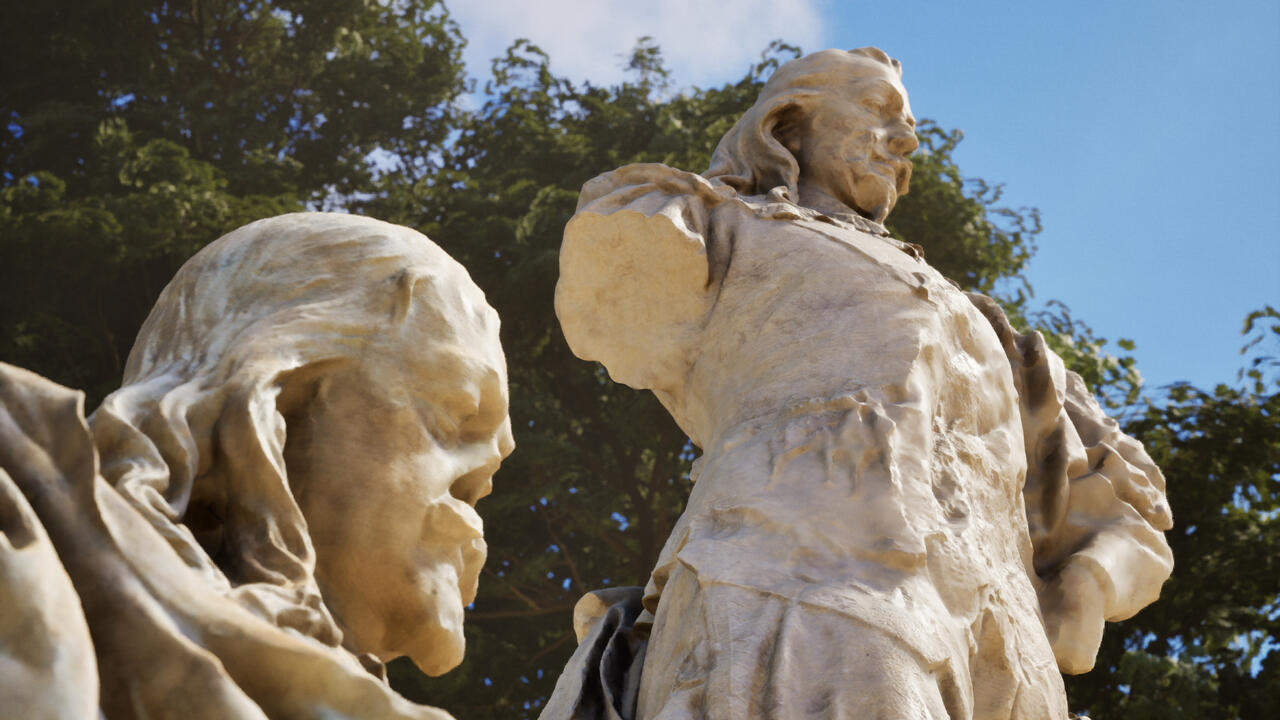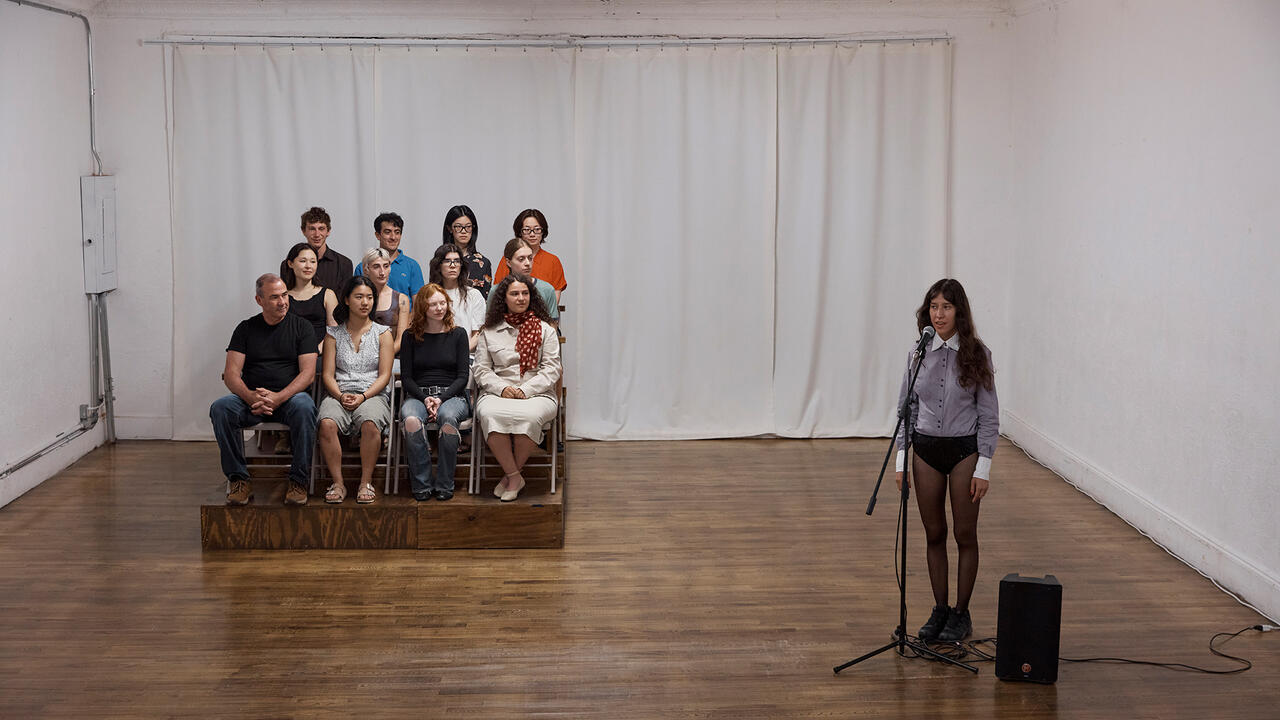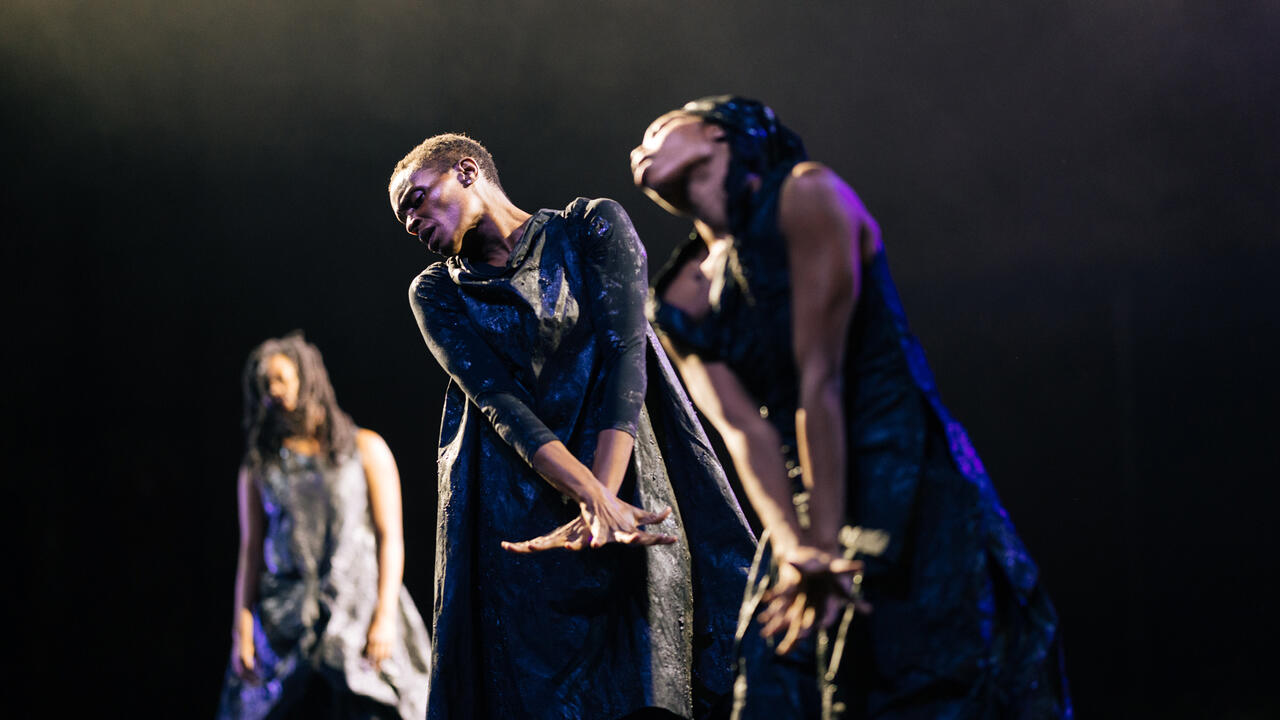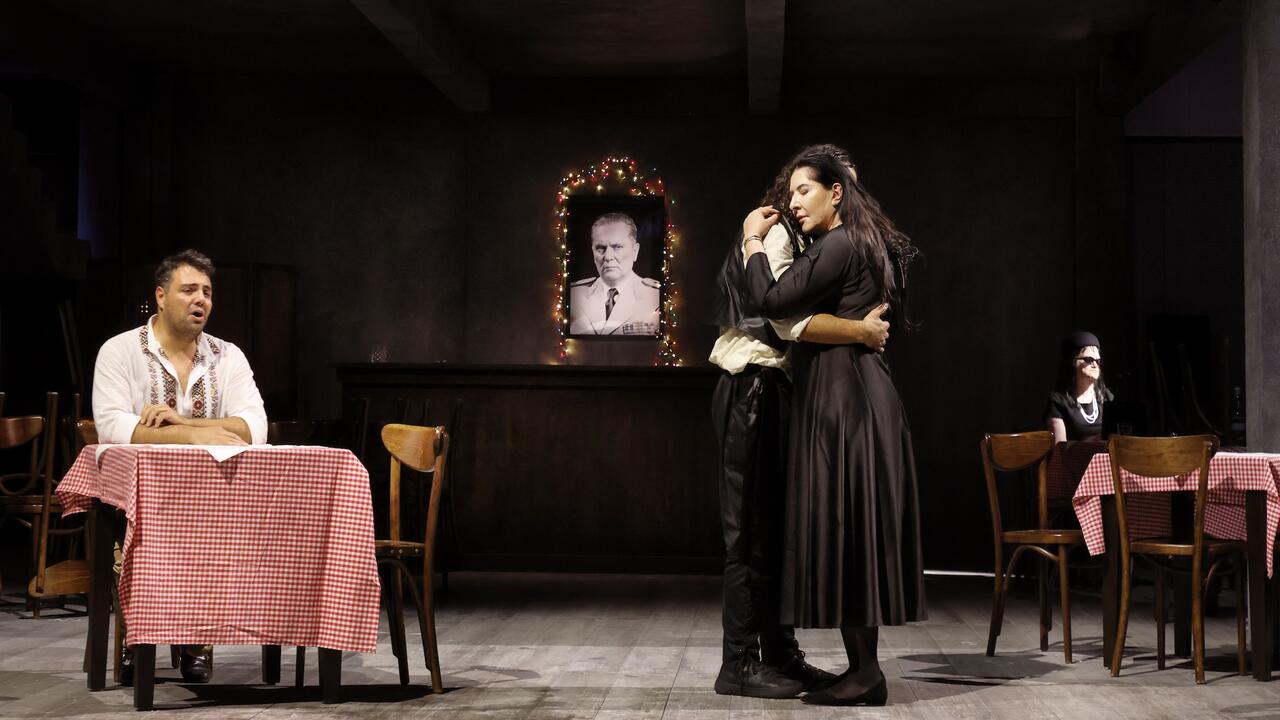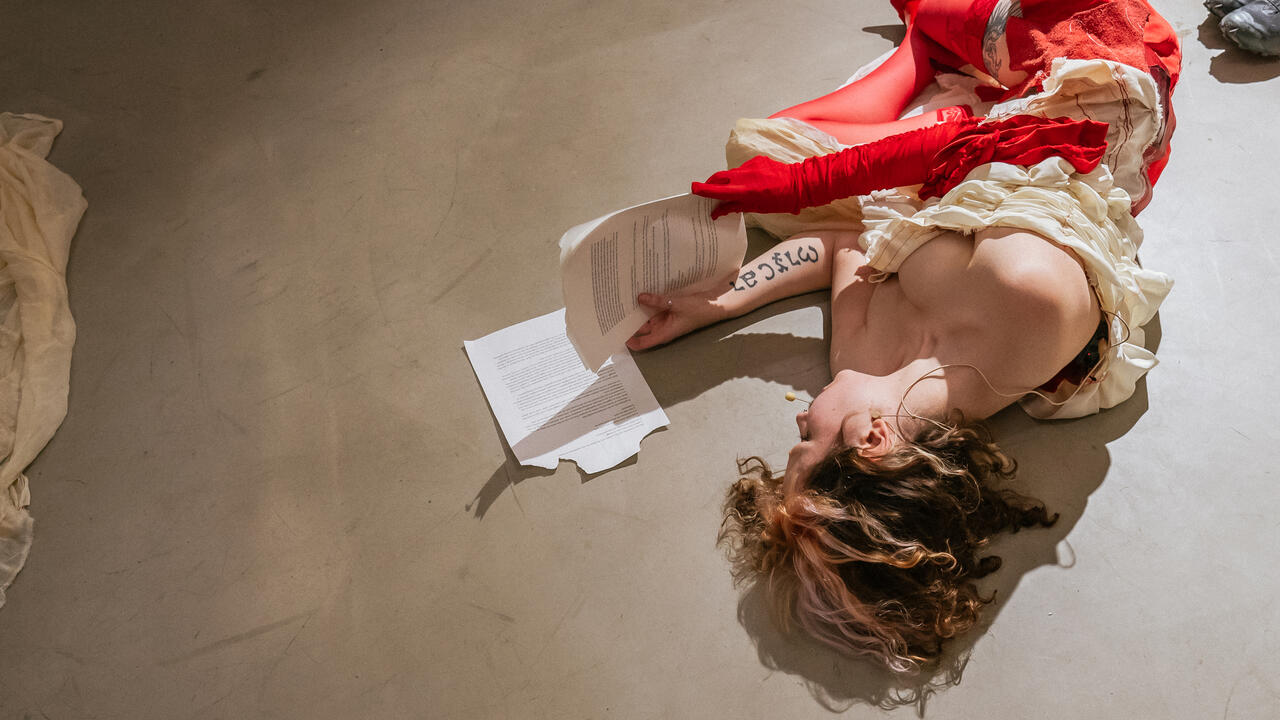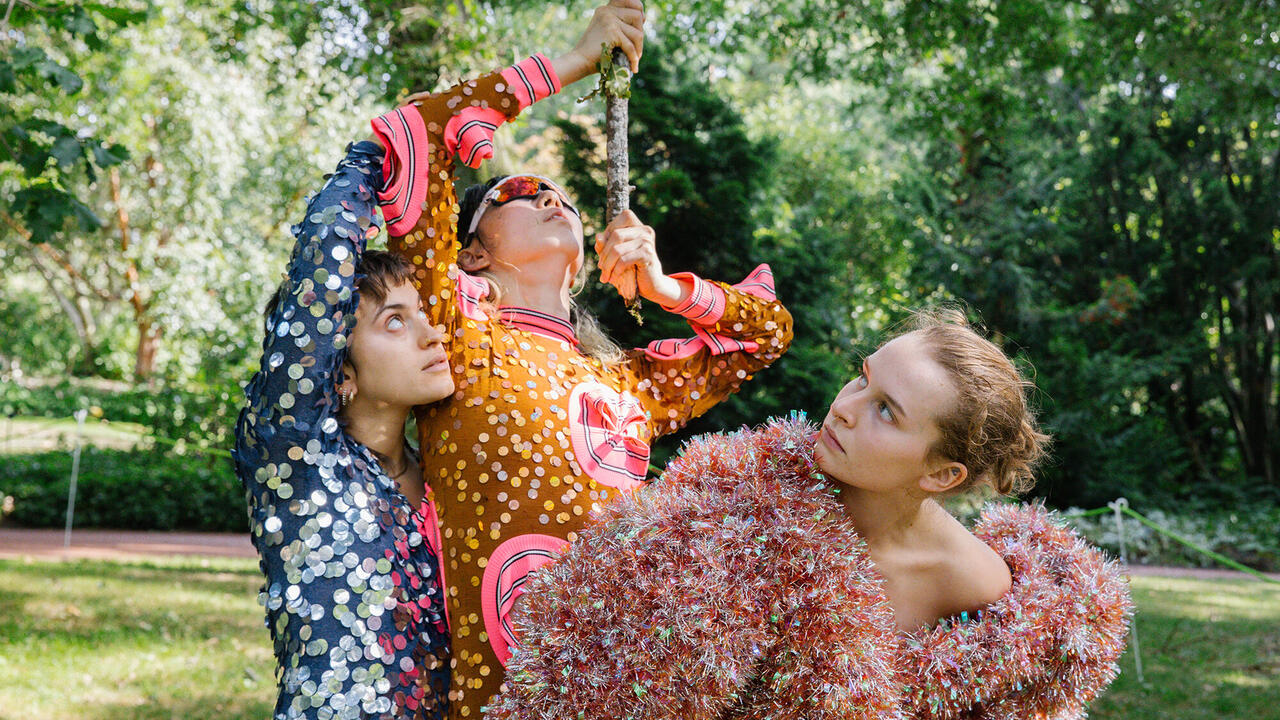Ei Arakawa Asks How Much Performance Art Is Worth
At Galerie Max Mayer, a series of LED ‘paintings’ reflects on the value of performative practices
At Galerie Max Mayer, a series of LED ‘paintings’ reflects on the value of performative practices

In a short video tucked beneath the staircase that descends into Ei Arakawa’s debut show at Galerie Max Mayer, five individuals wearing face masks perform a series of exercises seemingly to exhaustion, socially distanced from one another by wooden frames supporting sheets of clear plastic – partitions that mimic the temporary dividers found in Soba-An, Düsseldorf’s iconic Japanese restaurant. Soba-An Structure Performance (all works 2020) finishes with the performers placing these constructions in Mayer’s new space in Schmela Haus, where they remain as elements of Arakawa’s exhibition ‘Fees & Nerf’. The work is a far cry from the artist’s usual performances, which rely on a live audience to activate them – a dynamic that is currently unimaginable.
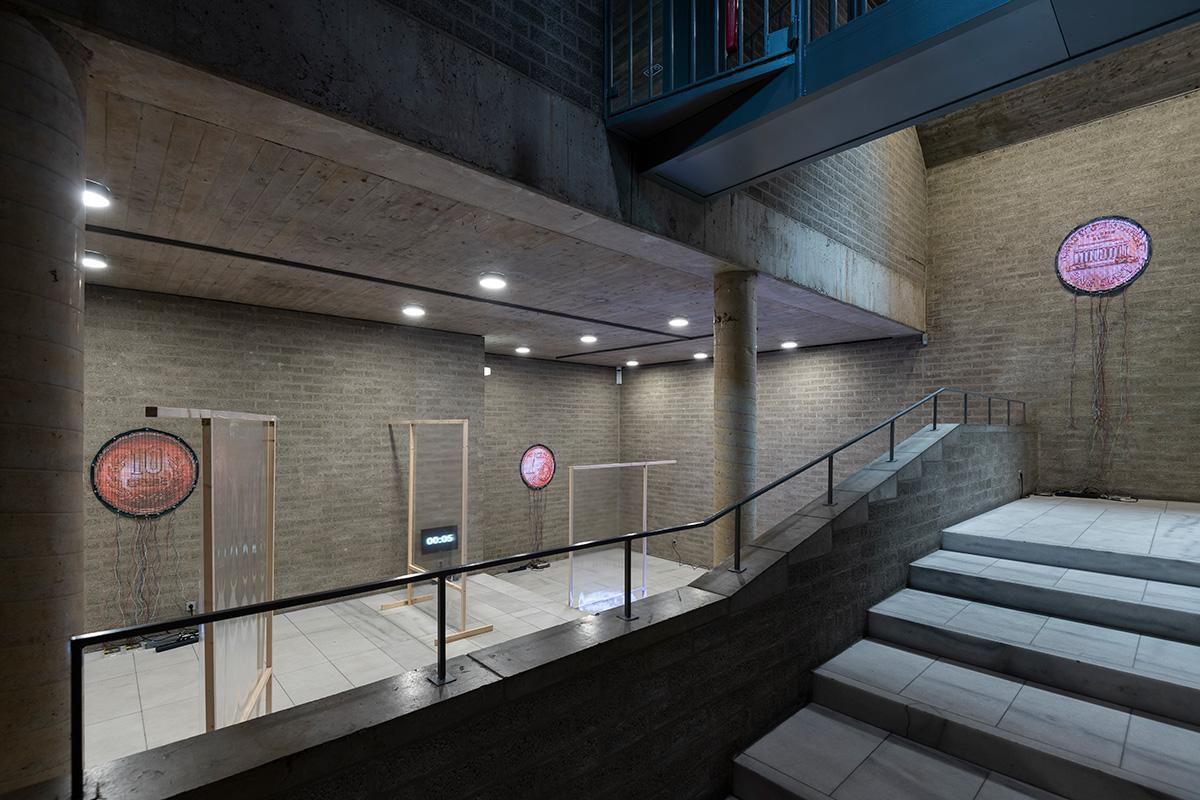
Impeded by the pandemic’s shutdown of almost all public performance, ‘Fees & Nerf’ finds the artist in self-reflexive mode, interpreting his past performances as a series of five LED ‘paintings’: circular fabric works covered in light-emitting diodes that illuminate sums in different currencies (dollars, euros, yen and pounds sterling). The amounts display the artist’s rate of pay per minute based on the honorarium he received for performances that took place at institutions and biennials in Berlin, London, New York and Yokohama. The titles outline the relative labour time of each piece: Single’s Night (Duration: Multiple Times in Total of 3 Hours, & Approx. 80 Hours on Preparation, Honorarium: 1,000 GBP, 0.20 GBP per Minute), for instance, reveals that Tate Modern paid the least.

If the value of performance art is measured in exchange, then money ‘acts out […] alive-ness’, writes Arakawa in the exhibition text. Performance, in other words, is a living currency that takes physical form. Here, Arakawa transplants the more financially precarious artform of performance into the arena of the most lucrative – painting – by association. The exhibition’s title implies further artistic vulnerability. By using the gaming term ‘nerf’ as a metaphor – which denotes a reduction in the desirability or effectiveness of a game element – Arakawa suggests that his work has become less desirable, or less effective, due to COVID-19. If, in this sense, the artist’s practice has been devalued, cashflow becomes an appropriate concern – not least because fees, rather than sales, are the bedrock of any primarily performance-based occupation.
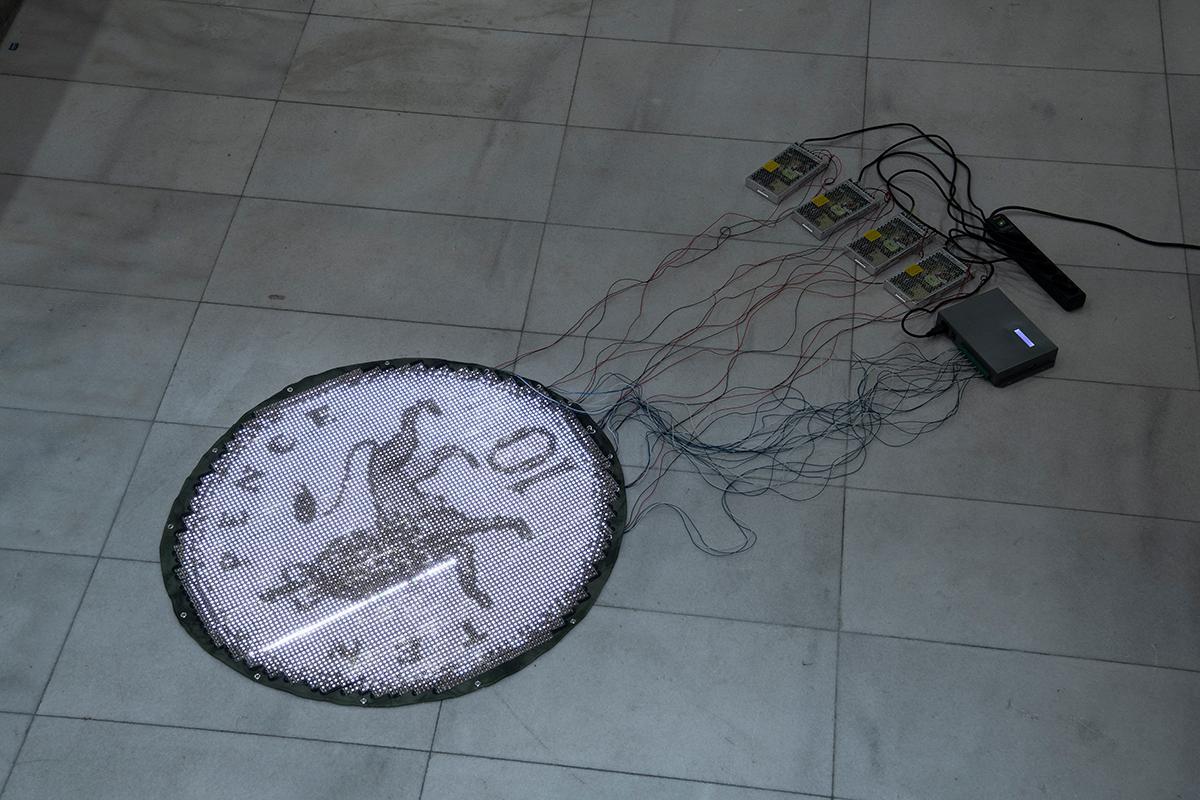
‘Fees & Nerf’ is not the first time the artist has manifested performance in static works. His 2018 exhibition, ‘Performance People’, at Düsseldorf’s Kunstverein für die Rheinlande and Westfalen also featured LED canvases bearing circular astrological charts that he and his collaborator Sarah Chow devised from the dates of historical performances by, amongst others, Tony Conrad and Yoko Ono. All that remains to complete the circulatory nature of Arakawa’s practice is for the very institutions that originally commissioned the artist's performances to incorporate these astrological charts into their collections.
To complete the transactional nature of ‘Fees & Nerf’, Arakawa co-wrote and produced a song with Dan Poston and ZALA from an outfit called Mish-Mosh. The guitar riffs in ‘Family Dollar (Social Capital)’ are lighter than heavy metal, perhaps because the song’s high pitch is intended to reflect the perspective of a coin: ‘Sometimes I ended up on the palm of the artist’s hand.’ These lyrics appear karaoke-style over a video slideshow detailing the dismantling of Arakawa’s brother’s tanning salon in Fukushima, which closed earlier this year. The song laments this and other losses – spiritual, social, temporal – that depend on forms of trade which aren’t purely fiscal.
Ei Arakawa's ‘Fees & Nerf’ runs at Galerie Max Mayer, Düsseldorf, until 31 October.
Main image: Ei Arakawa, Family Dollar (Social Capital) – after the interviews about money 1, 2020, 107 cm diameter, music: Ei Arakawa, lyrics: Ei Arakawa and Dan Poston, arrangement: ZALA from Mish-Mosh. Courtesy: the artist and Galerie Max Mayer, Düsseldorf; photograph: Katja Illner








